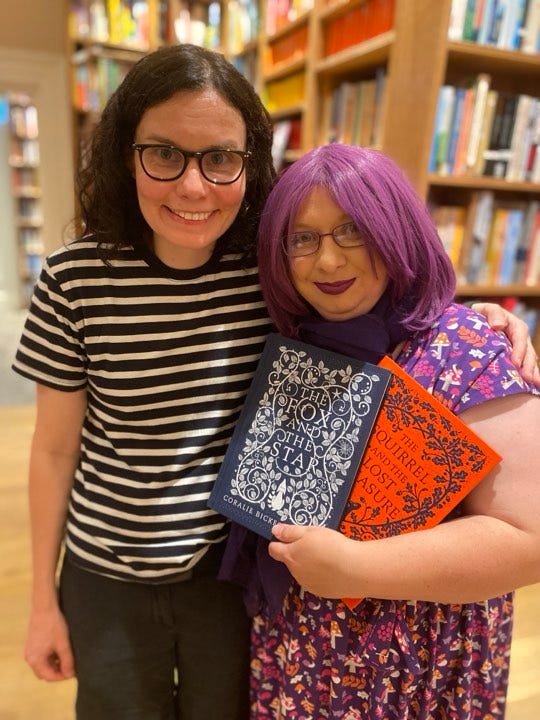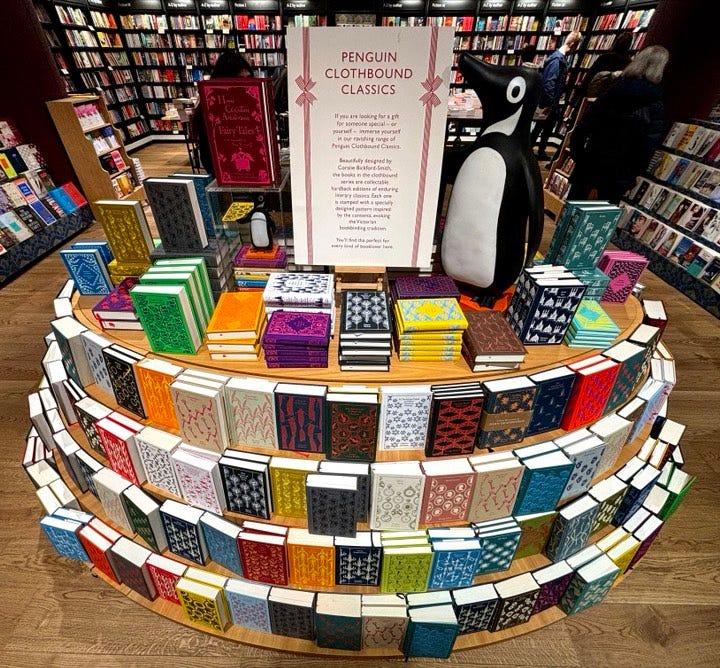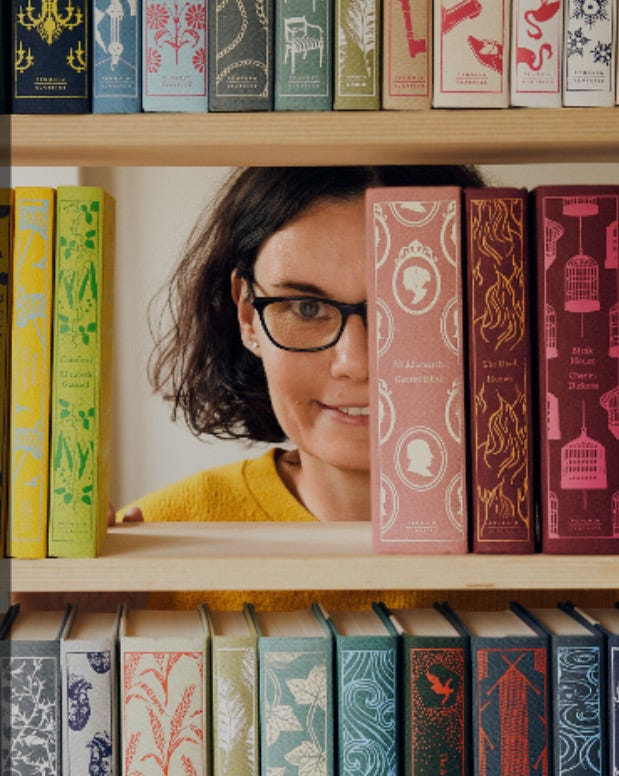Coralie Bickford-Smith - Queen of the Clothbounds
An exclusive interview with Coralie Bickford-Smith, children's author and designer responsible for Penguin Clothbound Classics
While Coralie Bickford-Smith might not be a household name outside the realm of book lovers, what is for certain is that most people would know her work.
Coralie has changed the face of publishing single-handedly with the idea to make clothbound versions of Penguin classic stories from Jane Austen to Dracula and in doing so, brought these novels to a new audience and sparked a wave of copycat products.
Design has been a big interest for Coralie, taking her to an MA in the subject and to Penguin where she set about reinventing how books will be printed and how they will be designed, leading to book printers having to make changes to their equipment to bring Coralie’s ideas to life.
She hasn’t stopped there either, she has written and produced a number of award-winning children’s books, The Fox and the Star being the one that has garnered the most acclaim, and the illustrations shows that Coralie is a master of many talents.
I have been lucky to have spent some time with Coralie and she told me about the processes involved in bringing clothbounds to the mass market and how she has influenced an industry with her inspiration and sheer determination.
Speaking about what brought her to push forward with bring back clothbounds, Coralie said: “I wanted to create books that were loved and cherished. To emulate the beautiful bindings of the Victorian era. I have always been inspired by these books. They are beautiful and tactile.”
Coralie continued to add who has been her inspiration. She said: “I am very much inspired by William Blake and William Morris. They created books that I love to own myself. I am so lucky that other people love them too, so I get to keep designing more from the series!”
In creating the clothbound series, there was also a pushback against e-readers and the declarations that the physical book was dead. Coralie said: “Also in a time when the kindle was looking like it might create the end of the physical book, I wanted to prove that the physical book still was an important part of enjoying a story. Books as a physical object are so dear to my heart. There is nothing like losing yourself within the pages of a physical book.”
With 97 clothbound books already in the series, are there any titles that Coralie would like to design in the future? Well, it seems that this is in the hands of the editors, but she is happy to turn her hand to whichever they choose. She said: “I am so lucky I have got to work on my favourite authors books. Even a Philip Pullman! As the designer I do not get to choose what titles go into the series. There is a team of editors that curate the titles, which I find that exciting as I get to read books that I never would have come across if left to my own devices.”
Of course, there have been designs which Coralie has enjoyed more than others but the one that has been her favourite was clear, and it is a gothic classic and she has added a fantastic twist to the design. Coralie told me: “Dracula! Not only is it black foil on a dark grey cloth - which is so uncommercial that I never thought I would get away with that colour combination. But I weaved garlic flowers around the whole book to stop Dracula escaping when it was on your bedside table. In the novel they weave garlands of garlic flowers around the women’s neck to stop him biting them in the night. This will always be a favourite of mine. The novel itself was mesmerising and I enjoyed reading it so much.”
Producing a new design is not a five-minute job and Coralie goes deep into the narrative to find an aspect that can deeply inspire the design and not be an obvious answer to the title of the novel. There was one story that proved to be the hardest to do, and it is a classic from the 18th century.
Coralie revealed her hardest assignment so far: “Robinson Crusoe. I wrote my dissertation on the printed editions of this title. At the time it was one of the most published books in the English language. I had analysed the illustrations and the covers from 100s and 100s of editions.
“I knew how it had been portrayed on all those covers, and I wanted to create something new. Highlight a part of the story that had never been put on its cover before. I spent so long thinking and thinking, and I felt so stumped for an original idea.
“When I remembered that he used a wooden post to notch the passing of time on and I represented the passing of time and the solitude by the phases of the moon. I love it when you finally get that eureka moment.”
While Coralie went down a bit of a Robinson Crusoe rabbit hole with her hardest assignment, she said there are times when she is given just days to come up with a design due to its urgency.
Speaking about the process, Coralie said: “It can depend on my workload and the deadlines. Sometimes I get covers that are so urgent I need to get them done in a few days. Sometimes I can take my time and really immerse myself in the text. There are no hard and fast rules. I like to be very organic in my process. Obviously the most fun is when I really get to ponder and read and ponder some more.”






